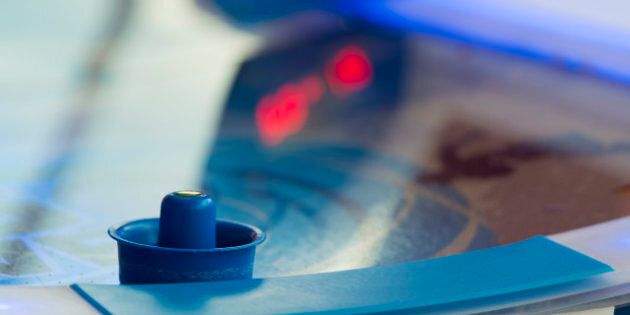
What game has three forwards, two defencemen and a goalie on each team and is one of Canada's most popular pastimes?
That's right, table hockey.
Although ice hockey has been rightly called Canada's game, a strong argument can be made that table hockey is Canada's indoor game.
While most kids were growing up with a football, a baseball glove or a tennis racket in hand, I spent much of my youth bent over various forms of a table hockey game.
Back in the 1950s and 60s, the game was a crude version of the on-ice game. We owned one of these tabletop contraptions which featured L-shaped players operated by spring-loaded knobs at either end of the "rink" which could only rotate about a fixed axis.
Despite the limitations of that simple game, we took to it like outdoor hockey itself. Since the players were limited in what they could do, the puck was not a puck at all but rather a round, black marble. The only player who had any mobility was the goalie who could at least slide back and forth in front of his net.
Back then, typically the two teams were decked out in the uniforms of the beloved Montreal Canadiens and the hated Toronto Maple Leafs. Or, as my younger brother might have put it, the beloved Toronto Maple Leafs and the hated Montreal Canadiens.
Not only were we able to pursue our fierce rivalry by watching the real Leafs and Habs battle it out on TV, we could also play out our ongoing conflict on the cheap metal surface that served as our home rink. The tabletop contests were long and fierce as the marble/puck made its way past our metal stand-ins for the likes of Jacques Plante and Johnny Bower.
Although there weren't a lot of options when playing with that board, we still managed to make the games interesting. Fast hands and quick reflexes kept the marble traveling at top speed. And once we figured out how to turn the spring tighter before releasing a shot, the game became even faster with some of the danger of the on-ice game like getting hit in the face by an errant puck.
Inevitably, of course, the mechanisms wore out, players broke and marbles were lost. Luckily for us, one Christmas morning, we received a brand new table hockey game under the tree.
This was a new generation of table hockey. No more fixed spring players and marble pucks. This game had a real puck and mobile players who could be guided with rods along lengthy slots.
We were thrilled. Here was a table game that more closely mirrored the real on-ice version. By skillfully manipulating the controls, we could make actual passes from player to player and even try a rudimentary slap shot.
We wiled away our Christmas school vacation bent over our new board. The battles continued with game after game played out on our living room coffee table. Even my dad and two younger sisters joined in to make it a true round-robin hockey tournament.
I haven't played table hockey for years but I imagine it still has an honored place in many Canadian households. Despite today's wealth of electronic and computer games, there's still something special about the hands-on physical nature of the tabletop game.
Growing up Canadian often means growing up with hockey. It's the quintessential Canadian sport. Like so many Canadian families, we embraced hockey by playing the game and watching the game both live and on TV. But the truest sign of our hockey devotion were the hours spent playing the miniature version of the game called table hockey.